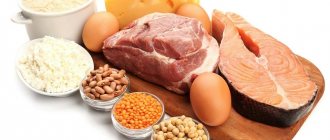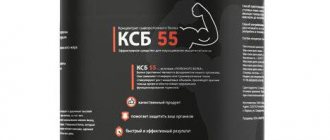General information
Protein C is one of the main clotting inhibitors. Its active form binds and deactivates coagulation factors, thereby regulating the process of thrombus formation, slowing it down.
Information obtained from the results of the test for protein C (% activity) makes it possible to prevent the development of thrombosis, prescribe adequate treatment for patients with congenital/acquired deficiency of the component, and reduce the risk of miscarriage and thrombotic complications of pregnancy.
The blood is maintained in a liquid state due to the timely adsorption of coagulation factors. Normally, the endothelium (the inner surface of blood vessels) and anticoagulants (antithrombin, protein C and S) are responsible for this process. Protein C plays the role of the main activator of proteins and adsorbent of coagulation factors.
Protein C is produced in the liver. It circulates in the bloodstream in an inactive state. Activated on the surface of platelets and endothelial cells under the influence of thrombomodulin and thrombin. Active Protein C:
- thins the blood;
- acts as an anti-inflammatory agent;
- ensures natural cell death.
Indications and contraindications
The study is prescribed if hereditary thrombophilia is suspected, especially if there are relatives in the family who suffer from this pathology. For prognostic purposes, the analysis may be indicated to assess the degree of risk of developing thrombosis or thromboembolism before taking hormonal contraceptives. The analysis is also used for the differential diagnosis of coagulation system disorders (for example, in liver disease or in the postoperative period). The study is prescribed as part of pregnancy planning or in cases of recurrent miscarriage, as well as before starting therapy with indirect anticoagulants.
Hemorrhoids kill the patient in 79% of cases
Relative contraindications to testing protein C levels are the acute phase of an infectious disease, sepsis or acute thrombosis. It is also not recommended to perform the test while taking oral contraceptives or anticoagulants, since the results will not be reliable (warfarin reduces the activity of protein C). In this case, you need to take a break from treatment, during which a study should be carried out.
Protein C deficiency
Lack of protein C leads to vein/artery thrombosis and circulatory disorders of internal organs (myocardial infarction, stroke, pulmonary embolism). Pregnant women may have an increased risk of complications: preeclampsia and eclampsia, thromboembolism, thrombosis, intrauterine growth retardation, frozen pregnancy, miscarriages, stillbirth, DIC, etc. Also, low levels of protein C cause necrosis (death) of the skin.
Acquired protein C deficiency. Causes:
- production disruption or accelerated consumption;
- violation of structure, functional unsuitability;
- vitamin K deficiency;
- liver diseases, its age-related degradation;
- extensive burns or severe injuries;
- major surgery;
- taking anticoagulants (warfarin and others).
Congenital protein C deficiency
The deficiency gene is inherited by representatives of either sex (up to 0.5% of cases).
There are two types of carriage of the mutated gene:
- homozygous - diagnosed in newborns and accompanied by DIC syndrome (blockage of small vessels), neonatal purpura (capillary effusions of blood on the skin), etc.;
- heterozygous - manifests itself after puberty, increases the likelihood of vascular blockage with a low response to anticoagulant treatment.
Congenital protein C deficiency in infants is characterized by failure to produce sufficient amounts of protein C by the liver or the secretion of a defective protein that does not function as an anticoagulant.
When diagnosing pathology, two indicators are determined: the percentage of protein C activity and its amount in the blood. An analysis for protein C is also carried out to make a prognosis in septic conditions (acute blood infection). If the activity level decreases by less than 40% and decreases over time by 10% per day, then the prognosis is unfavorable.
Protein C
A study aimed at determining protein C in the blood to diagnose possible causes of thrombosis and thrombotic complications.
Synonyms Russian
Protein C; PS; coagulation protein C.
English synonyms
Protein C; PC; coagulation protein C.
Research method
Kinetic colorimetric method.
What biomaterial can be used for research?
Venous blood.
How to properly prepare for research?
- Eliminate fatty foods from your diet for 24 hours before the test.
- Avoid physical and emotional stress for 30 minutes before the test.
- Do not smoke for 30 minutes before the test.
General information about the study
Protein C is one of the most important proteins - factors of the anticoagulant (anti-coagulation) system of the blood. The synthesis of this protein occurs in the liver and is vitamin K dependent. Protein C is in constant circulation in the blood in an inactive state. Its activation occurs when a complex of thrombin and thrombomodulin acts on the surface of intact endothelial cells and platelets. In its active form, protein C partially destroys and inactivates non-enzymatic coagulation factors Va and VIIIa. The enzymatic action of protein C occurs in the presence of its cofactor, protein S. It is a vitamin K-dependent non-enzymatic cofactor synthesized in the liver and circulating in the bloodstream. As a result of the described interactions, blood coagulation processes are inhibited, and the processes of the anticoagulation system (fibrinolysis) are also indirectly activated.
Determining the concentration or activity of protein C in the blood is important in the diagnosis of various pathological conditions and diseases. A decrease in these indicators may be associated with a violation of the synthesis of protein C, its rapid consumption, or a violation of the protein structure and its functional inferiority. Protein C synthesis can be reduced as a result of congenital deficiency, vitamin K deficiency, liver pathologies, disruption of its synthetic function, during the neonatal period and in the elderly. Excessive protein consumption can be observed in thrombosis, thromboembolism, consumption coagulopathies, disseminated intravascular coagulation syndrome (DIC), after major operations and injuries. Impairment of the functional activity of protein C can be observed when taking anticoagulant drugs, in particular when taking oral warfarin. An increase in the concentration of protein C can be observed during pregnancy, when taking estrogen-based oral contraceptives, and with kidney disease.
Congenital protein C deficiency occurs in 0.2-0.5% of cases and is characterized by a severe course. It requires preventive and therapeutic measures to prevent the development of thrombosis and fatal complications. A rare variant of homozygous protein C deficiency manifests itself as fulminant DIC syndrome in newborns and requires urgent diagnostic measures and treatment.
In pregnant women, protein C deficiency leads to a number of severe pathological processes and complications. Thrombosis and thromboemoliia may develop with damage to the deep veins of the lower extremities, pelvic organs, and cerebral vessels, and a possible complication in the form of pulmonary embolism. Intrauterine growth retardation as a result of fetoplacental insufficiency, spontaneous abortions and repeated miscarriages may occur. The risk of developing preeclampsia, eclampsia and disseminated intravascular coagulation increases.
When taking indirect anticoagulants and with a significant decrease in protein C activity to or less than 50% of the norm, skin necrosis may develop. Such “warfarin necrosis” develops rarely, but is characterized by a severe course and requires careful medical supervision. Therefore, it is recommended to carry out treatment with indirect anticoagulants under the control of protein C activity. Control and repeated determinations of protein C should be carried out at least a month after discontinuation of the drugs.
The main manifestations of protein C deficiency are arterial and venous thrombosis of various locations. Myocardial infarction, stroke, and pulmonary embolism may occur in the absence of other predisposing factors and in young people. Determination of the concentration/activity of protein C can also be recommended for oncological diseases, purulent-inflammatory diseases, sepsis and septic processes.
What is the research used for?
- To diagnose the concentration or activity of protein C;
- To diagnose the concentration or activity of protein C when identifying the causes of thrombophilias and thrombotic complications;
- To identify possible causes of arterial and venous thrombosis of various locations, in particular in young people;
- To diagnose the causes of thrombotic complications during pregnancy;
- To diagnose possible causes of the development of thrombotic complications in newborns, in the complex diagnosis of congenital protein C deficiency;
- For the diagnosis of protein C during treatment with indirect anticoagulants, warfarin;
- For the diagnosis of protein C in oncological, purulent-inflammatory diseases, sepsis.
When is the study scheduled?
- With a comprehensive examination to identify the causes of thrombosis (determination of antithrombin III, protein S, etc.);
- For clinical manifestations of arterial and venous thrombosis: myocardial infarction, stroke, pulmonary embolism, deep vein thrombosis of the lower extremities, pelvic organs, etc.;
- For symptoms of congenital thrombosis, presumably associated with protein C deficiency;
- For pregnancy pathologies: preeclampsia, eclampsia, disseminated intravascular coagulation syndrome, intrauterine growth retardation, spontaneous abortions, repeated miscarriages;
- When treated with indirect anticoagulants, warfarin; with the development of warfarin skin necrosis;
- With vitamin K deficiency, liver pathologies;
- For oncological, purulent-inflammatory diseases, sepsis.
What do the results mean?
Reference values: 70 - 140%.
Reasons for increased protein C levels:
- Pregnancy;
- Taking estrogen drugs;
- Kidney diseases.
Reasons for low protein C levels:
- Congenital protein C deficiency;
- Vitamin K deficiency;
- Liver pathologies;
- Thrombosis, thromboembolism;
- Disseminated intravascular coagulation syndrome (DIC syndrome);
- Extensive surgical operations, injuries;
- Taking anticoagulant drugs, in particular warfarin;
- Purulent-inflammatory diseases;
- Sepsis;
- Oncological diseases.
What can influence the result?
Taking indirect anticoagulant drugs, warfarin.
Important Notes
- Determining the level of protein C is recommended to be carried out along with comprehensive laboratory diagnostics of other indicators of the coagulation and anti-coagulation systems of the blood.
- It is recommended to carry out treatment with indirect anticoagulants under the control of protein C activity. Control and repeated determinations of protein C must be carried out at least a month after discontinuation of the drugs.
Also recommended
- Protein S free
- Antithrombin III
- Lupus anticoagulant
- Coagulogram No. 1 (prothrombin (according to Quick), INR)
- Thrombin time
- Coagulogram No. 2 (prothrombin (according to Quick), INR, fibrinogen)
- Coagulogram No. 3 (prothrombin (according to Quick), INR, fibrinogen, ATIII, APTT, D-dimer)
- Annexin V IgG antibodies
Who orders the study?
Therapist, general practitioner, hematologist, gynecologist, neonatologist, pediatrician, obstetrician-gynecologist, surgeon, anesthesiologist-resuscitator.
Literature
- Dolgov V.V., Menshikov V.V. Clinical laboratory diagnostics: national guidelines. – T. I. – M.: GEOTAR-Media, 2012. – 928 p.
- Fauci, Braunwald, Kasper, Hauser, Longo, Jameson, Loscalzo Harrison's principles of internal medicine, 17th edition, 2009.
- Christiaans SC, Wagener BM, Esmon CT, Pittet JF. Protein C and acute inflammation: a clinical and biological perspective / Am J Physiol Lung Cell Mol Physiol. 2013 Oct 1;305(7):L455-66.
- Bouwens EA1, Stavenuiter F, Mosnier LO. Mechanisms of anticoagulant and cytoprotective actions of the protein C pathway / J Thromb Haemost. 2013 Jun;11 Suppl 1:242-53.
Indications
A referral for analysis is issued by a therapist, phlebologist, hematologist, neonatologist, and gynecologist.
- Comprehensive study of the blood coagulation system (within the framework of a coagulogram);
- Diagnostics of protein C activity (in%) and its concentration in the blood;
- Family history of protein C deficiency (carrier – direct blood relative);
- Diagnosis of vein and artery thrombosis, thrombophilia (including in young patients);
- Determining the causes of thromboembolism in patients under 50 years of age;
- Budd-Chiari syndrome (hepatic vein thrombosis);
- Blockage of the renal arteries;
- Planning pregnancy in patients at risk;
- History of pregnancy complications, miscarriages and stillbirths;
- Diagnosis of thrombotic conditions in newborns;
- Debilitating coagulopathies (pathological bleeding);
- Septic conditions and acute purulent-inflammatory diseases;
- Malignant processes;
- Vitamin K deficiency;
- Liver diseases;
- Monitoring therapy with indirect anticoagulants, such as warfarin;
- Necrosis of the skin while taking warfarin.
Analysis for protein C is not recommended during periods of acute viral diseases, exacerbation of thrombotic phenomena, treatment with anticoagulants, as well as in patients receiving hormonal therapy (including oral contraceptives).
Why is protein deficiency dangerous? Example from life
I will talk about the dangers of poor nutrition and insufficient protein intake during adolescence (when the body is growing) when playing sports and bodybuilding.
It was a long time ago, more than twenty years ago, when I was still a teenager and began to feel the feel of a home horizontal bar and two-kilogram dumbbells.
Youthful curiosity gradually transformed into passion, with goals characteristic of this age: to be more courageous, stronger “so that my classmates would be afraid.”
I've always disliked eating. And of course, I knew nothing about the need to “love” it during intense sports activities.
Years of training five times a week, adolescence, and reluctance to depend on food gave their results. During my first trip to the military registration and enlistment office somewhere in the 9th grade, the doctors assessed with surprise and alarm the physical condition of my body and its readiness for military service.
Then there were numerous medical examinations, examinations, and incomprehensible diagnoses. I barely understood what was wrong with me and saw that it was also difficult for doctors to understand, but I clearly remember about “functional disease... narrowing of peripheral vessels in the extremities...” and other not very pleasant things.
Now, when I look at photographs of myself at that time, I am amazed at the state of extreme exhaustion and stupidity.
We recommend
: Proper nutrition for gaining muscle mass: 7 recommendations from experts
Before I started my “home bodybuilding” classes, I was always one of the best students in my class, including in physical education. As I “progressed in bodybuilding,” my PE scores regressed.
I noticed a significant decrease in both strength and endurance, along with a surprised look from the physical education teacher who once had high hopes for me...
But that’s not all. I got sick very often . On average, 5-6 times a year I caught a cold, which always lingered in my body for 3-4 weeks, always turning into more severe forms: sore throat, otitis media, sinusitis...
Now that the picture of the dead man has formed more or less clearly, let's move on. Sometimes you need to scare it a little to get what you need to.
Needless to say, what was the reason for all of the above: one of its important components is included in the title of the article and will be disclosed below.
A lesson that you should take for yourself, especially if you are young: when the body grows, the need for protein is already high to ensure this growth; If you are involved in sports and especially bodybuilding, it is important to pay very close attention to nutrition .
A lack of protein over a long period of time is dangerous not only because you will not notice progress in sports and bodybuilding, and may be disappointed in them for the rest of your life, but also because of serious functional disorders in the body, which in some cases you will have to carry with you for the rest of your life... and maybe even roll...
We recommend
: Is protein harmful to health? Scientific facts
Interpretation of results
Normally, the concentration of protein C in the blood depends on age and is:
| Patient age | Protein C (%) |
| Up to 5 days of life | 17–53 |
| 5-30 days | 20 – 64 |
| 1-3 months | 21 – 65 |
| 3-6 months | 28 – 80 |
| 6-12 months | 37 – 81 |
| 1-6 years | 40 – 92 |
| 6-10 years | 45 – 93 |
| 10-16 years | 55 – 111 |
| > 16 years old | 70 – 140 |
Note:
in newborns and preschool children, low concentrations of protein C are due to the physiological immaturity of the liver.
Lowering values
- Thrombosis of veins and arteries, thrombotic conditions;
- Vitamin K deficiency or disturbance of its metabolism (including malabsorption syndrome);
- Diseases of the liver (hepatitis, cirrhosis, failure, Budd-Chiari syndrome) and kidneys;
- Infectious processes (sepsis, shock), intoxication;
- Oncological diseases;
- DIC syndrome;
- Immunodeficiency conditions;
- Complications of pregnancy and childbirth (critical period about 2 months after birth);
- Therapy with anticoagulants (heparin, warfarin).
Read more about blood clotting indicators
- Coagulogram: main indicators
- Fibrinogen in the blood
- APTT
- Prothrombin
- Thrombin time
- D-dimer
- Lupus anticoagulant
- Antithrombin III
- Plasminogen
- Protein C
- Protein S free
- Coagulogram during pregnancy
Decoding
Reasons for the increase
Elevated levels of protein C in the blood are not clinically significant and are not associated with health problems.
If the amount and activity of protein C are within normal limits, then adequate regulation of the anticoagulant system can be argued.
Reasons for the decline
A reduced level or activity (with a normal amount) of protein C is an indicator of a high risk of thrombosis, since the course of the coagulation cascade has no limit.
- acquired protein C deficiency can be acute (develops suddenly) and chronic (long-term), temporary and permanent :
- liver diseases and disorders of vitamin K metabolism - liver cirrhosis, viral hepatitis, liver failure
- severe infectious diseases - sepsis, shock, septicemia
- kidney diseases
- malignant tumors
- DIC syndrome
- AIDS
- pregnancy and 1.5 months after birth
- after any episode of thrombosis - consumption of protein C at the site of thrombosis
- when treated with heparin or warfarin
- infectious diseases
- congenital protein C deficiency manifests itself from birth
- decreased protein production in the liver
- synthesis in the liver of abnormal protein C, which is not able to perform its anticoagulant function - does not bind to protein S or factors VIIIa and Va
Risk factors for thrombosis in protein C deficiency
- surgical operations
- placing a cast on the leg or on 2 or more joints on the upper limb
- use of hormonal contraceptives
- pregnancy and 1.5 months after birth
- long journeys with immobilization for more than 4 hours
- significant dehydration











